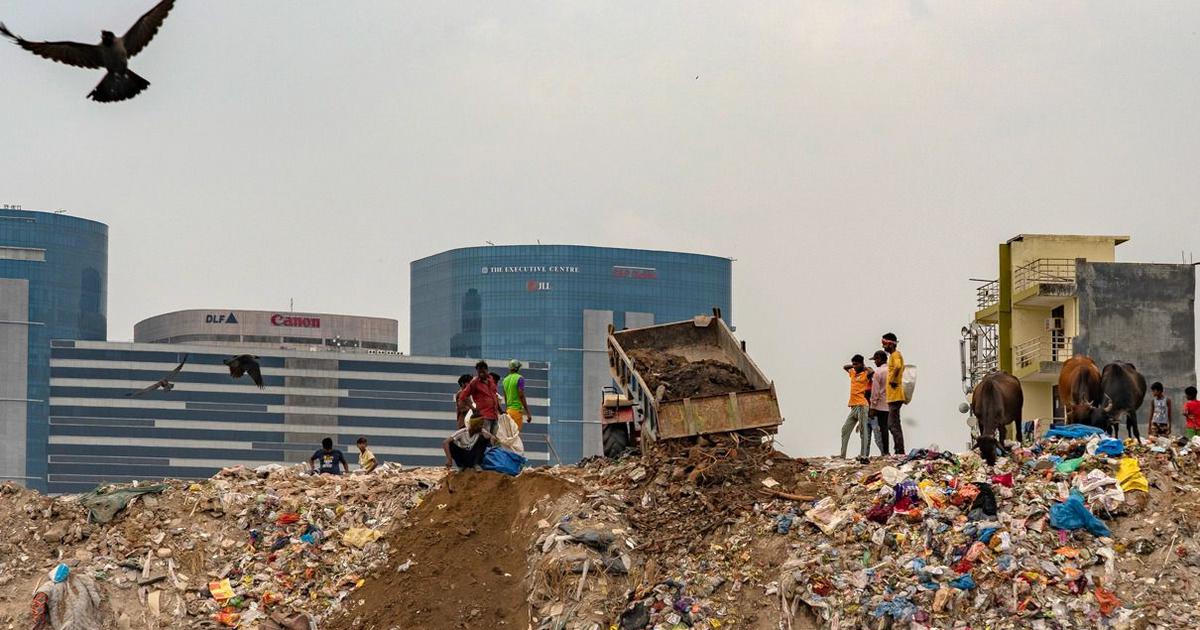Types of Waste: The biodegradable waste consists of organics that can be utilized for food by naturally occurring microorganisms within a reasonable length of time. The biodegradable organic comprise of agro residue, food processing rejections, municipal solid waste (food waste, leaves from garden waste, paper, cloths/ rags, etc.), waste from poultry farms, cattle farm slaughterhouses, dairy, sugar, distillery, paper, oil extraction plant, starch processing, and leather industries. Non-Biodegradable organic materials are organics resistant to biological degradation or have a very low degradation rate. This primarily includes woody plants, Cardboard, cartons, containers, wrappings, pouches, discarded clothing, wooden furniture, agricultural dry waste, bagasse, rice husk, etc.

Technologies available
Waste-to-Energy (WTE) technologies to recover the energy from the waste in the form of Electricity and Biogas/Syngas are given below:
BIOMETHANATION
Biomethanation is the anaerobic digestion of organic materials which is converted into biogas. Anaerobic digestion (AD) is a bacterial fermentation process that operates without free oxygen and results in biogas containing mostly methane (~60%), carbon dioxide (~40%), and other gases. Biomethanation has dual benefits. It gives biogas as well as manure as the end product.
This technology can be conveniently employed in a decentralized manner for the biodegradation of segregated organic wet wastes such as wastes from kitchens, canteens, institutions, hotels, slaughterhouses, and vegetable markets.
The biogas generated from the Biomethanation process can be burned directly in a gas boiler/burner to produce heat for thermal application industries and cooking or burnt in a gas engine to produce electricity. Alternatively, the biogas can be cleaned to remove the carbon dioxide and other substances, to produce BioCNG. This can be injected into the national gas grid to be used in the same way as natural gas, or used as a vehicle fuel.
By using the Biomethanation process, 20-25kgs of Cattle dung can generate about 1m3 of biogas and a further 1m3 of Biogas has the potential to generate 2 units of electricity or 0.4kgs of BioCNG.
INCINERATION:
Incineration technology is the complete combustion of waste (Municipal Solid Waste or Refuse derived fuel) with the recovery of heat to produce steam that in turn produces power through steam turbines.
The flue gases produced in the boilers have to be treated by an elaborate air pollution control system. The resultant ash from the incineration of solid waste can be used as construction material after necessary processing while the residue can be safely disposed of in a landfill.
This technology is a well-established technology and has been deployed in many projects successfully at the commercial level in India to treat solid wastes like Municipal Solid Waste and Industrial solid Waste etc. and generate electricity.
GASIFICATION
Gasification is a process that uses high temperatures (500-1800o C) in the presence of limited amounts of oxygen to decompose materials to produce synthetic gas (a mixture of carbon monoxide (CO) and hydrogen (H2)). Biomass, agro-residues, Segregated MSW, and RDF pellets are used in the gasifier to produce Syngas. This gas further can be used for thermal or power generation purposes
The purpose of gasification of waste is to generate power more efficiently at lower power levels (< 2MW) and also to minimize emissions hence it is an attractive alternative for the thermal treatment of solid waste.
PYROLYSIS
Pyrolysis uses heat to break down combustible materials in the absence of oxygen, producing a mixture of combustible gases (primarily methane, complex hydrocarbons, hydrogen, and carbon monoxide), liquids, and solid residues. The products of the pyrolysis process are (i) a gas mixture; (ii) a liquid (bio-oil/tar); (iii) a solid residue (carbon black). The gas generated by either of these processes can be used in boilers to provide heat, or it can be cleaned up and used in combustion turbine generators. The purpose of the pyrolysis of waste is to minimize emissions and maximize the gain.
